
Carbon sequestration is the natural or artificial process by which carbon dioxide is removed from the atmosphere and held in solid or liquid form.
In simple terms, Carbon sequestration is the process of capturing and storing atmospheric carbon dioxide.
406 Earthworks' novel carbon sequestration strategy is an efficient & economic solution to bury, trap the carbon stored within biomass for a slow decay in an underground natural vault.
In return keeping the old tree dead fall free from Wildfire fuel.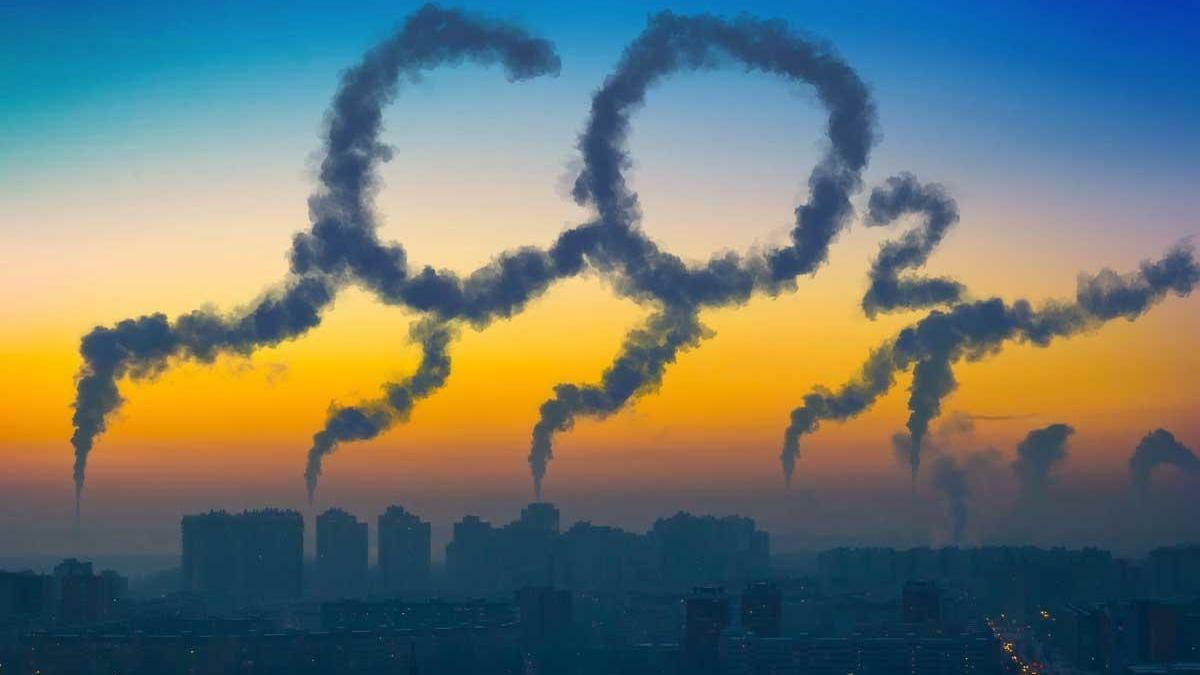

It is one method of reducing the amount of carbon dioxide in the atmosphere with the goal of reducing global climate change.
Forests
Forests and woodlands are considered one of the best forms of natural carbon sequestration. CO2 binds to plants during photosynthesis, exchanging it for oxygen as a purifying emission.
On average, forests store twice as much carbon as they emit, while an estimated 25% of global CO2 emissions are sequestered alongside forests in other vegetative forms, such as grasslands or rangelands (fields, prairies, shrublands etc.).
Protecting such natural environments is therefore crucial to ensuring carbon sinks capture CO2 effectively. Deforestation poses the biggest threat to this natural process, as does construction or intensive agriculture.
The role trees play in carbon sequestration is that they reduce the amount of carbon in the atmosphere by sequestering carbon in new growth every year.
As a tree grows, it stores more carbon by holding it in its accumulated tissue. The amount of carbon annually sequestered is increased with the size and health of the trees.
The implementation strategy of a wood burial scheme will involve three major steps:
(1) Enabling access to the forest if not already in place;
(2) Site selection, trench digging for burial or building a shelter for above ground storage;
(3) Selective tree cutting or the collection of dead wood followed by trimming, shortening and burial or storage, repeated at an appropriate return interval.
406's Earthworks strategy ensures certain dead or live trees are harvested via collection or selective cutting, then buried in trenches or stowed away in above-ground shelters.
The largely anaerobic condition under a sufficiently thick layer of soil will prevent the decomposition of the buried wood. Because a large flux of CO2 is constantly being assimilated into the world's forests via photosynthesis, cutting off its return pathway to the atmosphere forms an effective carbon sink.
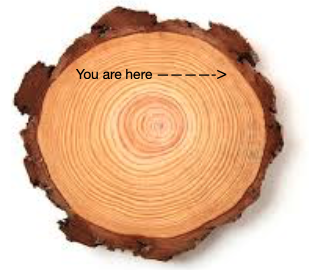
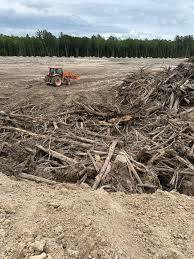
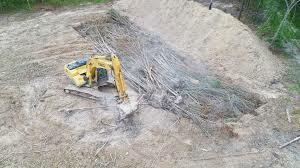
We simply position old and fallen trees into a 'slow cycle' process to limit carbon emissions, essentially mimicking conditions on how coal is naturally created.
Pits are dug, generally at dimensions of 200 X 100 X 12 1/2 feet deep. These pits will be tightly packed with the waste biomass and then covered with impermeable clays native to the area. We never use plastics to line or cover our burial pits.
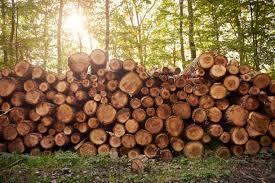
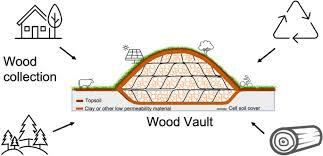
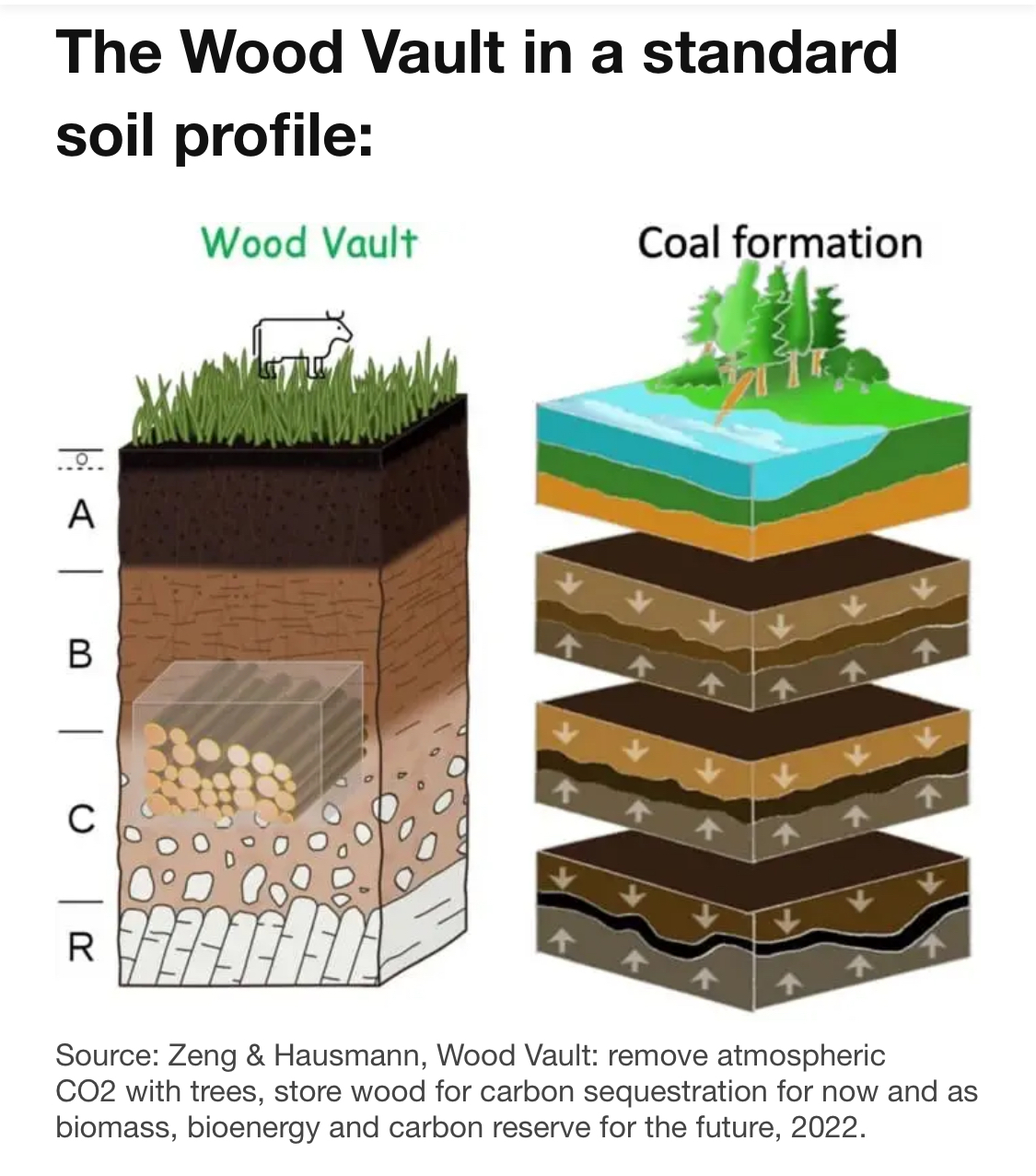
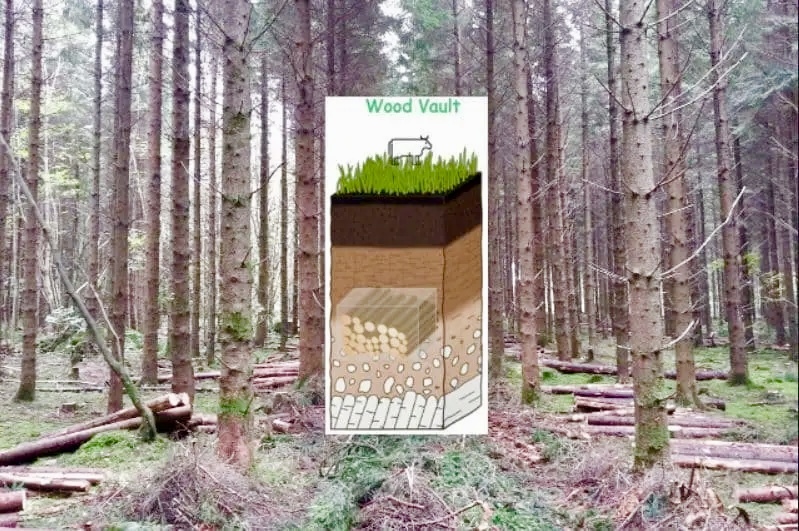
Our research has shown that organic matter, especially wood, in municipal landfills decomposes extremely slowly. With these, it became clear that wood harvesting and burial could be a viable method for carbon sequestration.
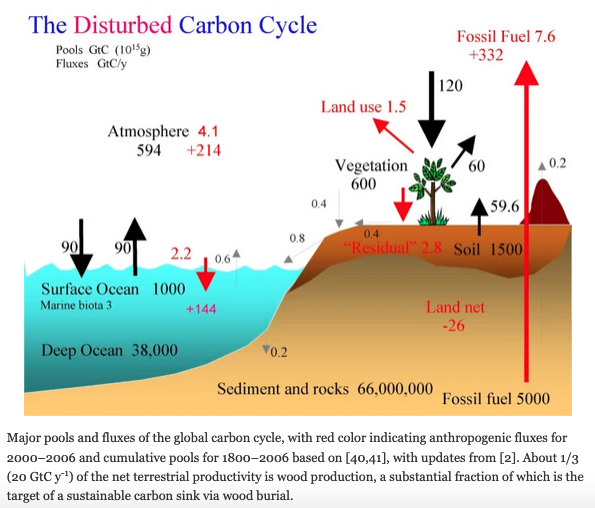
When we think of a renewable resource, the first thing that usually pops in our head are the solar panels on our neighbor’s roof or perhaps the water that flows from the mountains. Rarely does a stand of trees root in our idea of a renewable resource.
But the cycle of seed, plant, grow, and harvest makes trees a natural renewable resource and this is something we, at the USDA Forest Service, would like everyone to know. This is because while trees grow in the forest, they store carbon dioxide from the atmosphere in their trunks, branches, stems, leaves, roots and soil.
So, when trees are sustainably harvested, wood continues to store carbon in the thousands of products we use every day, from paper products to lumber to energy generation. Trees then regrow, repeating the cycle.
To better understand how trees and wood products store and cycle carbon, let’s pretend we are the atmosphere — the landlord — and carbon emissions are our tenants. We want some carbon tenants — they help us pay our mortgage and keep our house a comfortable temperature, much like the greenhouse effect. And these biogenic carbon tenants benefit the Earth by regulating temperatures.
But when people use fossil fuels like oil and coal, they send us far too many carbon tenants who squat permanently in our home and change the balance we previously had. This happens because we — the atmosphere — have no way of evicting or escorting them back from where they came, deep within the Earth.
They are called “fossil” for a reason — they took millions of years to be stored in the Earth, under conditions Earth may never experience again. These freeloading, fossil fuel carbon tenants overcrowd and trash our once balanced and clean atmospheric home, trap excess heat, and influence the Earth’s climate.
Whereas, if the only carbon emissions humans sent to the atmosphere were derived through decomposition or burning of wood and vegetation, sure we would always have some tenants, but they would be naturally cycling into new vegetation growth and not permanently controlling the dial of our thermostat, like the fossil fuel squatters. These biogenic carbon emissions would stay only the duration of their short-term contracts, and politely leave over time as the regenerating forest calls them back.
When people use wood-based products in place of fossil fuel-intensive products — like steel, concrete, or plastic — there is a permanent benefit to our atmospheric home. For instance, buildings framed in wood release 26 percent less carbon than steel-framed buildings and 31 percent less than concrete-framed buildings. Similarly, when people install wood floors instead of vinyl flooring, carbon emissions can be as much as 20 times lower.
Simply put, by building with wood, we’re opting to store additional carbon in everyday products and buildings. If a wood house stands for 150 years, it will store carbon until it decays or is replaced. In that time, the forest will have regrown resulting in additional carbon storage.
Using renewable wood products is like choosing a few clean, respectful tenants who stay for the duration of the lease, instead of hundreds of unwelcome tenants who never move out.
Obviously the atmosphere is not just a hypothetical landlord, it’s a critical part of what makes Earth livable, holding the air we breathe and regulating the temperature of the planet. Every product we choose has a carbon consequence on our home. When we choose wood, we keep our home clean, support forests, and invest in long-term climate solutions.
Feel free to reach out to discuss your property clearing, fire line management.
